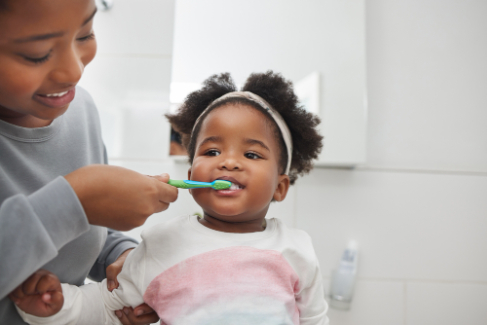
Let’s face it: those tiny, pearly whites are a big deal. Baby teeth may seem like they are just temporary placeholders, but they play a much bigger role in your child’s overall health and development. Here is everything you need to know to keep those baby teeth in tip-top shape and set the stage for a lifetime of healthy smiles.
Why Do Baby Teeth Matter?
Baby teeth are critical for:
- Chewing: Good nutrition starts with being able to eat a variety of foods. Try munching an apple without front teeth—it is not easy.
- Speech Development: Baby teeth help your child learn to pronounce words clearly. Missing teeth can turn a “Sally” into a “Thally.” Cute? Yes. Functional? Not so much.
- Saving Space: Baby teeth hold spots for permanent teeth. If a baby tooth comes out too soon, other teeth might drift and create alignment problems.
When Do Baby Teeth Arrive and Leave?
Every child is different, but here’s a general timeline:
- First tooth: Typically around six months. (Cue the teething crankiness!)
- Full set: By age three, most kids have all 20 baby teeth.
- First to go: Lower front teeth, usually around age six.
- Full goodbye: Most kids say farewell to their last baby tooth by age 12.
Teething: The Early Struggle
Teething can turn your sweet little angel into a cranky ball of misery. Signs include:
- Excessive drooling (you might want to invest in extra bibs)
- Irritability
- Trouble sleeping
- Gnawing on anything within reach—toys, fingers, furniture
How to Help:
- Offer a cold teething ring or a clean, damp washcloth to chew on.
- Massage their gums with your finger.
If needed, a pediatrician-approved dose of infant acetaminophen can help.
Caring for Baby Teeth
Good habits start early. Even before that first tooth shows up, clean your baby’s gums with a soft, damp cloth. Once the teeth arrive, here is what to do:
- Start Brushing ASAP: Use a tiny smear of fluoride toothpaste and a soft-bristled brush.
- Brush Twice a Day: Morning and before bed. No skipping!
- Floss: Yes, even baby teeth need flossing, especially if two teeth touch.
- No Bedtime Bottles: Milk or juice at bedtime can lead to tooth decay, aka “baby bottle syndrome.” Stick to water.
First Dental Visit is Sooner Than You Think
The American Academy of Pediatric Dentistry recommends a first dental visit by your child’s first birthday or within six months of their first tooth. Yes, that early! It’s not just about checking teeth. It’s about:
- Establishing a dental home for your child.
- Identifying potential problems early.
- Teaching you how to care for your child’s teeth.
Common Baby Tooth Issues
Cavities: Even baby teeth can get cavities. Limit sugary snacks and drinks, and brush regularly.
Thumb-Sucking: It’s normal for babies, but if it continues past age 4, it can affect tooth alignment.
Teeth Grinding (Bruxism): Many kids grind their teeth at night. Usually, they outgrow it but mention it to your dentist.
Losing Baby Teeth: The Tooth Fairy’s Big Moment
When a baby tooth gets wiggly, it’s time for some bittersweet parenting milestones. Here’s what to expect:
- Encourage Gentle Wiggles: Kids love to wiggle loose teeth. It’s fine as long as it doesn’t hurt.
- No Force: Never yank a tooth before it’s ready. Let nature (or your kid’s relentless wiggling) do the work.
- Celebrate the Loss: Whether it’s a visit from the Tooth Fairy or just a high-five, make it special. Losing a tooth is a big deal for kids.
Final Thoughts
Baby teeth may be small, but their impact is huge. Taking care of them teaches kids the importance of oral health from an early age. Think of it like building a house: baby teeth are the foundation. Without a strong start, the structure will not hold up. Your future self (and your kid’s future smile) will thank you!

